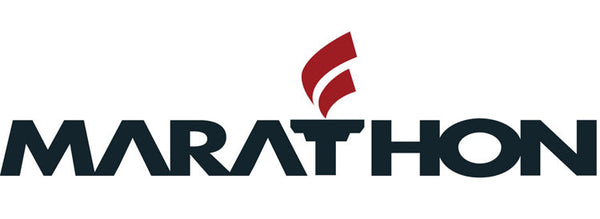A quick reference for matching needle size, point type, coatings, and shank to your fabric and machine.
Needle Size and Fabric Compatibility
- General Rule: Use the smallest needle appropriate for the fabric. Heavier fabrics require larger needles, and lighter fabrics need smaller ones.
- Size 9/65: Suitable for very fine, delicate fabrics like silk, organdy, and tricot.
- Size 11/75: The most common size for machine embroidery. Ideal for medium-weight fabrics (poplin, cotton, linen) and often paired with 40-weight thread.
- Size 12/80: Good for slightly heavier fabrics than 75/11, such as heavier cottons and linens.
- Size 14/90: Recommended for heavy, dense fabrics like denim, fleece, canvas, and heavy tweeds.
Point Type and Fabric Compatibility
Sharp Point (RG or S):
- RG (Round Point with a Small Ball): A standard for multi-head embroidery machines; good all-purpose option for fine and medium-weight woven and knit fabrics.
- S (Sharp): Very acute point for tightly woven fabrics, microfibers, and coated materials where a clean, straight stitch is required.
Ball Point (BP or FFG):
- FFG (Light Ball Point): Gently displaces fibers instead of piercing them—prevents holes and runs in knits and elastic materials; ideal for t-shirts, jerseys, and stretchy knits.
- BP/FFG/SES are often used interchangeably to describe this light ball point.
Special Needle Coatings and Types
- Titanium-Coated: Gold-colored, more durable (often 3–5× longer life). Great for high-speed embroidery, dense fabrics, and high stitch counts.
- Teflon / Non-Stick: Reduces friction and prevents adhesive buildup from stabilizers and fusibles—helps avoid thread breaks and skipped stitches.
- Large Eye (Embroidery) Needles: Enlarged eye and deeper groove reduce thread friction—especially useful with delicate or specialty threads (metallics, rayons).
Shank Types and Machine Compatibility
- Round Shank (Commercial Machines): Designed for multi-head, industrial machines. Common system: DB × K5.
- Flat Shank (Home Machines): Used in most home sewing/embroidery machines. Common system: HA × 1 or 130/705 H.
Quick Reference Table
| Needle Size | Point Type | Shank Type | Needle Variants | Best For (Fabric & Apparel) |
|---|---|---|---|---|
| 65/9 | Sharp Point (RG/S) | Round / Flat | Standard | Lightweight fabrics like silk, organza, voile; fine monograms on delicate apparel |
| 65/9 | Ball Point (BP/FFG) | Round / Flat | Standard | Lightweight knits, sheer jersey, lingerie, baby clothes (prevents fabric snags) |
| 70/10 | Sharp Point (RG/S) | Round / Flat | Standard | Light cottons, quilting cotton, lightweight polyester, corporate logos on shirts |
| 70/10 | Ball Point (BP/FFG) | Round / Flat | Standard | Soft knits, t-shirts, interlock fabrics, stretch sportswear |
| 75/11 | Sharp Point (RG/S) | Round / Flat | Standard, Titanium, Large Eye (Metallic), Teflon | Medium-weight fabrics: cotton twill, polyester blends, uniforms, caps, structured shirts |
| 75/11 | Ball Point (BP/FFG) | Round / Flat | Standard, Titanium, Large Eye (Metallic), Teflon | Medium knits, fleece, sweatshirts, casualwear, athletic apparel |
| 80/12 | Sharp Point (RG/S) | Round / Flat | Standard, Titanium, Large Eye (Metallic), Teflon | Heavier cotton, denim shirts, jackets, canvas totes, embroidery on caps with stabilizers |
| 80/12 | Ball Point (BP/FFG) | Round / Flat | Standard, Titanium, Large Eye (Metallic), Teflon | Heavier knits, pique polos, hoodies, stretch fleece |
| 90/14 | Sharp Point (RG/S) | Round / Flat | Standard | Heavy fabrics: denim, canvas, leatherette, workwear, outerwear, caps with dense stitching |
| 90/14 | Ball Point (BP/FFG) | Round / Flat | Standard | Heavy knits, upholstery knits, performance sportswear, thick fleece |

